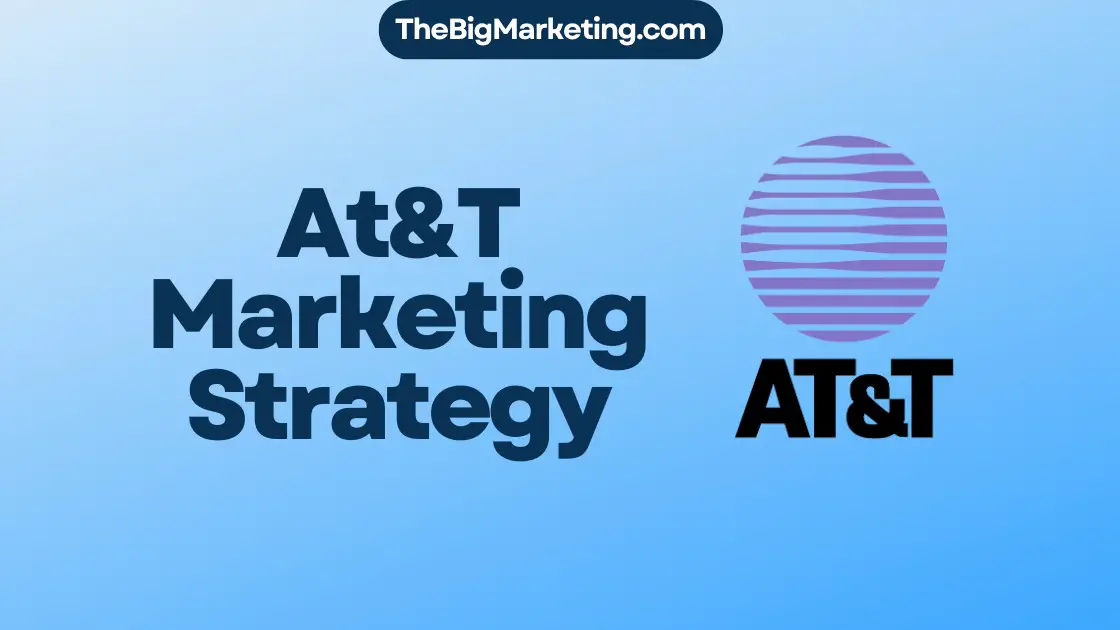Creating a marketing strategy is essential for nurturing customers, improving business outcomes, and increasing ROI. In 2024, incorporating high-ROI trends like short-form video and social media is crucial. A well-developed marketing strategy aligns teams, ties efforts to business objectives, identifies resonant content, and capitalizes on emerging trends. It includes defining brand objectives, understanding target audience personas, choosing effective marketing channels, and establishing key performance indicators. With the marketing industry constantly evolving, it is essential to stay ahead of the curve and embrace new ideas and strategies.
Key Takeaways:
- Creating an effective marketing strategy is essential for improving business outcomes and increasing ROI.
- Incorporating high-ROI trends like short-form video and social media is crucial in 2024.
- A well-developed marketing strategy aligns teams, ties efforts to business objectives, and capitalizes on emerging trends.
- Key components of a marketing strategy include brand objectives, target audience personas, marketing channels, and key performance indicators.
- Staying ahead of marketing trends is crucial in today’s constantly changing industry.
What is a Marketing Strategy?
A marketing strategy is a fundamental component of a company’s overall plan to promote its brand to a target audience. It encompasses various activities that involve research, goal-setting, and positioning to effectively reach and engage potential customers.
A comprehensive marketing strategy encompasses several key elements, including:
- Brand objectives: Clearly defined goals that a company aims to achieve through its marketing efforts.
- Target audience personas: A detailed understanding of the ideal customers who are most likely to be interested in the brand’s products or services.
- Marketing channels: The platforms and mediums through which the brand will communicate its messages to its target audience.
- Key performance indicators: Metrics that are used to evaluate the success and effectiveness of the marketing strategy, such as conversion rates, customer acquisition costs, and brand awareness levels.
A well-executed marketing strategy aligns teams within an organization, ensuring that everyone is working towards common objectives. It provides a clear direction for marketing efforts, tying them to the overall business goals. By identifying the resonant content and capitalizing on emerging trends, a marketing strategy helps a brand stand out in a crowded marketplace.
With the ever-changing landscape of the digital marketing world, a marketing strategy is crucial to keep up with the latest trends and technologies. By leveraging digital marketing channels effectively, businesses can reach and engage their target audience more efficiently, resulting in higher brand visibility, increased customer acquisition, and ultimately, improved business outcomes.
Now, let’s explore the components, differences, and benefits of a marketing strategy in more detail.
Marketing Strategy vs. Marketing Plan
When it comes to driving business success, it’s important to understand the difference between a marketing strategy and a marketing plan. While these terms are often used interchangeably, they refer to distinct elements of a comprehensive marketing approach.
A marketing strategy is the foundation of your marketing efforts. It outlines the long-term goals and overall approach for promoting your brand. This strategic roadmap sets the direction for your marketing activities, including goal-setting, research, and brand positioning. It provides a clear vision and guides your decision-making process as you navigate the ever-changing digital landscape.
On the other hand, a marketing plan focuses on the specific actions and tactics you will implement to achieve your long-term goals. It is a detailed roadmap that covers the actions, timelines, and resources needed to execute your strategy effectively. Your marketing plan may include targeted social media campaigns, influencer partnerships, online advertising strategies, and more.
While your marketing strategy provides the overall direction, the marketing plan ensures that you take specific steps to reach your goals. Both elements are essential for success and work hand in hand to drive your marketing efforts forward.
The Importance of Long-term Goals
Having a clear and defined marketing strategy allows you to set long-term goals for your business. These goals serve as benchmarks for measuring success and help you stay focused on your objectives. By defining your long-term goals, you provide a sense of purpose and direction to your marketing efforts.
Specific actions and tactics, outlined in your marketing plan, are designed to support these long-term goals. They provide the step-by-step roadmap for achieving success. Each action and tactic should align with your strategy and contribute to the overall growth and success of your business.
Marketing Strategy vs. Marketing Plan
| Marketing Strategy | Marketing Plan |
|---|---|
| Outlines long-term goals and overall approach | Covers specific actions and tactics |
| Provides direction for marketing efforts | Serves as a detailed roadmap |
| Includes goal-setting, research, and brand positioning | Includes targeted campaigns, partnerships, and timelines |
As you can see, both a marketing strategy and a marketing plan are vital components of a successful marketing approach. The strategy sets the stage for your marketing efforts, guiding your overall approach, while the plan provides the specific actions and tactics needed to achieve your goals.
By understanding the difference between these two elements and effectively integrating them into your marketing efforts, you can drive growth, increase brand awareness, and achieve long-term success.
Marketing Strategy Components
A solid marketing strategy comprises various components that work together to ensure its effectiveness. These components provide a roadmap for businesses to reach their marketing objectives, connect with their target audience, and achieve success in a competitive marketplace. Let’s explore the key components of a marketing strategy:
1. Marketing Mix
The marketing mix, also known as the 4Ps (Product, Price, Place, Promotion), is a fundamental element of any marketing strategy. It involves understanding what products or services to offer, pricing them appropriately, determining the right distribution channels, and creating compelling promotional campaigns. By analyzing the marketing mix, businesses can effectively position their offerings in the market and attract their target audience.
2. Marketing Objectives
Clear and measurable marketing objectives are crucial for guiding the overall strategy. These objectives define what businesses want to achieve through their marketing efforts, such as increasing brand awareness, driving customer acquisition, or boosting lead generation. Setting specific and attainable marketing objectives ensures that efforts are aligned with business goals and provide a framework for evaluating success.
3. Marketing Budget
Allocating a dedicated marketing budget is essential for implementing a successful strategy. The marketing budget encompasses all the resources, financial or otherwise, that businesses allocate to their marketing activities. A well-defined budget helps determine the level of investment required for various marketing initiatives, such as advertising, content creation, or market research. It ensures that resources are used efficiently and that the strategy is executed effectively.
4. Competitive Analysis
Conducting a thorough competitive analysis allows businesses to understand their competition’s strengths, weaknesses, and strategies. This analysis involves researching competitors’ products, marketing tactics, target audience, and market positioning. By gaining insights into the competitive landscape, businesses can identify opportunities to differentiate themselves, refine their messaging, and gain a competitive edge in the market.
5. Segmentation, Targeting, and Positioning
Segmentation involves dividing the target market into distinct groups based on shared characteristics and needs. Targeting involves selecting the specific segments to focus on and tailoring marketing efforts to reach those audiences effectively. Positioning refers to the creation of a unique and compelling market position that differentiates a brand from competitors. By segmenting, targeting, and positioning, businesses can deliver personalized and resonant messages to their target audience, driving engagement and conversion.
6. Content Creation
Content creation plays a vital role in a marketing strategy as it is the vehicle through which businesses communicate their messages to the target audience. Engaging and relevant content helps build brand authority, educates customers, and drives them to take action. From blog articles to social media posts, videos to podcasts, businesses should create a variety of content formats that align with their target audience’s preferences and provide value.
7. Metrics and Key Performance Indicators (KPIs)
Metrics and key performance indicators (KPIs) are essential for measuring the success and effectiveness of a marketing strategy. These metrics provide quantitative data on various aspects of the strategy’s performance, such as website traffic, social media engagement, lead conversion rates, or customer lifetime value. By tracking and analyzing these metrics, businesses can make data-driven decisions, identify areas for improvement, and optimize their marketing efforts for better results.
Integrating these components into a cohesive marketing strategy helps businesses create a roadmap for success. It ensures that marketing efforts are aligned with business objectives, resonate with the target audience, and deliver measurable results. By continuously evaluating and refining the strategy based on insights and data, businesses can stay competitive and achieve their marketing goals.
Why is a Marketing Strategy Important?
A well-defined marketing strategy is essential for businesses seeking clear direction and optimal marketing efforts. It serves as a roadmap, guiding organizations towards their goals and objectives. This section will highlight the key reasons why a marketing strategy is crucial for success in today’s competitive landscape.
Direction and Focus
A marketing strategy provides businesses with a clear sense of direction. It outlines specific goals and objectives, ensuring that all marketing efforts are aligned towards achieving them. By establishing a strategic direction, companies can avoid aimless marketing activities and focus their resources on activities that will yield the desired results.
Targeting the Right Audience
A marketing strategy helps businesses identify and target the right audience. By conducting thorough market research and developing buyer personas, companies can better understand their target customers’ needs, preferences, and pain points. This information enables them to craft tailored marketing messages and deliver them through the most effective channels.
Building a Strong Brand Identity
A marketing strategy plays a crucial role in shaping and building a strong brand identity. It helps define the brand’s values, personality, and unique selling proposition. By consistently communicating these elements through various marketing channels, businesses can establish a distinctive brand presence that resonates with their target audience.
Product Marketing Strategy Definition and Importance
A product marketing strategy plays a pivotal role in bringing a product to market successfully. It involves a strategic approach to marketing and sales tactics, along with long-term lead nurturing. By understanding the needs of the target audience, effectively positioning the product, aligning teams, and boosting revenue and sales, a product marketing strategy becomes a crucial driver of success.
One of the key aspects of a product marketing strategy is understanding the target audience. By gaining deep insights into their needs, preferences, and pain points, businesses can develop tailored marketing campaigns that resonate with potential customers.
Competitor analysis is another essential component of a successful product marketing strategy. By evaluating competitors’ strengths, weaknesses, and market positions, businesses can identify unique selling points and differentiate their products effectively.
Aligning teams within the organization is critical to ensure a cohesive approach to marketing the product. When teams across different departments, such as marketing, sales, and product development, work together towards a common goal, it improves communication, efficiency, and the overall effectiveness of the marketing strategy.
Furthermore, a product marketing strategy focuses on driving revenue and sales growth. By positioning the product as the best option for customers and showcasing its unique value proposition, businesses can maximize their revenue potential and achieve sustainable growth.
The importance of a well-defined product marketing strategy can be summarized as follows:
- Improved customer understanding: By conducting thorough market research and analyzing customer insights, businesses gain a deeper understanding of their target audience’s desires, motivations, and pain points.
- Successful competitor analysis: Evaluating competitors helps identify opportunities for differentiation and enables businesses to position their products effectively in the market.
- Team alignment: Aligning teams ensures effective collaboration, smooth communication, and consistent messaging to drive the product’s success.
- Boost in revenue and sales: A well-executed product marketing strategy focuses on presenting the product as the best solution for customers, ultimately leading to increased revenue and sales.
By integrating these key elements into their product marketing strategies, businesses can enhance their ability to connect with customers, outshine competitors, align internal teams, and achieve significant revenue and sales growth.
| Benefits of a Product Marketing Strategy |
|---|
| Improved customer understanding |
| Successful competitor analysis |
| Team alignment |
| Boost in revenue and sales |
Implementing a comprehensive product marketing strategy is crucial for businesses aiming to achieve sustainable growth, gain a competitive edge, and establish a strong foothold in the market.
What is Product Marketing Strategy?
Product marketing strategy plays a crucial role in successfully bringing a product to its intended audience. It encompasses various elements such as understanding the needs of the target market, differentiating the product from competitors, and crafting effective brand positioning and messaging strategies. A well-executed product marketing strategy aims to solve market problems and fulfill customer requirements.
One of the key aspects of a product marketing strategy is understanding the target audience’s needs. By conducting thorough market research, businesses can gain valuable insights into their customers’ pain points and preferences. This information serves as a foundation for developing a product or service that addresses specific market problems.
Another essential component of product marketing strategy is brand positioning. This involves positioning the product in a way that sets it apart from competitors and emphasizes its unique value proposition. By clearly defining the product’s benefits and advantages, businesses can effectively communicate why their offer is the best choice for customers.
In addition, messaging is a critical element of product marketing strategy. Crafting compelling messages that resonate with the target audience helps create awareness, generate interest, and influence purchasing decisions. Strong messaging focuses on highlighting the product’s key features and benefits while addressing the specific needs and pain points of customers.
Ultimately, a well-constructed product marketing strategy combines market understanding, brand positioning, and effective messaging to create an offer that meets customer demands and solves market problems. By aligning these elements, businesses can maximize their product’s potential and achieve success in the market.
| Key Components of Product Marketing Strategy | Examples |
|---|---|
| Market Research | Gathering customer insights through surveys, interviews, and data analysis |
| Brand Positioning | Distinguishing the product from competitors based on unique value propositions |
| Messaging | Developing compelling messages that resonate with the target audience |
| Offer Development | Creating a product or service that solves specific market problems |
| Competitive Analysis | Evaluating competitors’ offerings, pricing, and marketing strategies |
Why You Need a Product Marketing Strategy
Implementing a product marketing strategy is crucial for the success and growth of your business. It provides numerous benefits that contribute to customer understanding, differentiation, team alignment, and revenue and sales boost.
The Importance of Customer Understanding
By developing a product marketing strategy, you gain valuable insights into your target audience. This deep understanding of their needs, preferences, and pain points allows you to create targeted marketing campaigns that resonate with them. By addressing their specific needs, you can effectively position your product as the solution they’ve been searching for.
Creating Differentiation in the Market
In today’s competitive landscape, a product marketing strategy helps your business stand out from the crowd. It allows you to identify your unique selling points and effectively communicate them to your target audience. By showcasing what sets your product apart from competitors, you establish a strong brand identity and position yourself as the best choice.
Alignment of Teams
One of the key benefits of implementing a product marketing strategy is the alignment it brings to your teams. By clearly defining your product’s value proposition and positioning, you ensure that all members of your organization are on the same page. This alignment enables consistent and cohesive messaging throughout your marketing efforts, delivering a unified brand experience to your customers.
Driving Revenue and Sales Growth
Ultimately, a product marketing strategy is designed to boost your business’s revenue and sales. By effectively reaching your target audience, differentiating your product, and aligning your teams, you create a strong foundation for success. A well-executed strategy drives customer acquisition, increases conversions, and ultimately leads to revenue growth.
By investing time and resources into developing and implementing a product marketing strategy, you position your business for long-term success. You gain a deep understanding of your customers, stand out in the market, align your teams, and drive revenue and sales growth. Don’t underestimate the power of a well-crafted strategy—it can be the catalyst that takes your business to new heights.
How to Develop Your Own Product Marketing Strategy
Creating an effective product marketing strategy is crucial for business success. To develop your strategy, you need to focus on key elements such as understanding your target audience, conducting market research, defining the positioning and messaging, and creating a go-to-market strategy.
1. Understand Your Target Audience
Identifying your target audience is the first step in creating a successful product marketing strategy. By understanding their needs, preferences, and pain points, you can tailor your marketing efforts to resonate with them. Conduct market research, analyze demographic data, and study customer behavior to gain valuable insights.
2. Conduct Market Research
Market research plays a crucial role in developing a product marketing strategy. It helps you assess the competitive landscape, understand market trends, and identify areas for differentiation. Gather data on competitors, industry trends, and customer preferences to inform your strategy and make data-driven decisions.
3. Define Positioning and Messaging
Positioning and messaging strategies are essential for effectively communicating your product’s value proposition. Determine how you want your product to be perceived in the market and craft clear, compelling messaging that highlights its unique features and benefits. Align your messaging with your target audience’s needs and preferences.
4. Create a Go-to-Market Strategy
Your go-to-market strategy outlines how you will launch and sell your product to the market. It includes distribution channels, pricing strategies, promotional activities, and sales enablement plans. Develop a comprehensive plan that ensures your product reaches your target audience effectively and generates maximum revenue.
Summary:
Developing your own product marketing strategy involves understanding your target audience, conducting market research, defining positioning and messaging, and creating a go-to-market strategy. By implementing a well-crafted strategy, you can effectively promote your product, connect with your audience, and drive business growth.
The Importance of Marketing Systems
Marketing systems are vital for the effective implementation, organization, prioritization, planning, tracking, analysis, and optimization of marketing efforts. By establishing efficient systems, companies can overcome bottlenecks and ensure alignment across teams, leading to enhanced productivity and streamlined operations.
Effective implementation involves executing marketing strategies and initiatives according to plan, allowing for consistent delivery of campaigns and tactics. Organizing marketing activities ensures that roles, responsibilities, and workflows are clear, enabling teams to work harmoniously towards achieving marketing objectives.
Prioritization is key to managing resources effectively. Marketing systems help identify high-priority activities, allowing teams to allocate time, effort, and budgets strategically to drive maximum impact.
Proper planning plays a crucial role in the success of marketing campaigns. By utilizing marketing systems, businesses can develop comprehensive marketing plans that outline objectives, target audience segments, messaging, and timelines. This strategic roadmap guides teams throughout the campaign, ensuring a cohesive and focused approach.
Tracking and analysis are essential components of marketing systems. By utilizing tools and technologies, companies can monitor key performance indicators (KPIs), track the success of campaigns, and optimize strategies in real-time. This data-driven approach enables businesses to make informed decisions and agile adjustments to enhance marketing effectiveness.
Optimization is an ongoing process in marketing. Marketing systems enable companies to analyze campaign data, identify areas of improvement, and optimize marketing efforts to drive better results. By continuously measuring and refining strategies, businesses can enhance performance, increase ROI, and stay ahead of the competition.
| Benefits of Marketing Systems: | Description |
|---|---|
| Efficient Implementation | Streamlined execution of marketing initiatives to maximize effectiveness |
| Improved Organization | Clear roles, responsibilities, and workflows for enhanced teamwork |
| Effective Prioritization | Strategic allocation of resources to high-priority activities |
| Comprehensive Planning | Strategic roadmap outlining objectives, target audience, messaging, and timelines |
| Data-Driven Tracking and Analysis | Monitoring KPIs and real-time optimization based on campaign performance |
| Continuous Optimization | Refinement of strategies to enhance marketing effectiveness and maximize ROI |
Marketing systems are indispensable for ensuring the successful execution and optimization of a product marketing strategy. By implementing efficient systems, companies can drive revenue, enhance brand visibility, and achieve their marketing goals with greater efficiency and effectiveness.
Benefits of a Comprehensive Marketing Strategy in 2024
In the ever-evolving digital landscape, a comprehensive marketing strategy for 2024 can be the key to staying ahead of the competition and driving significant growth for businesses. Such a strategy embraces the latest trends, focuses on team alignment, and offers flexibility to adapt to changing market conditions and emerging trends. Let’s explore the benefits of adopting a comprehensive marketing strategy in 2024.
1. Embracing High-ROI Trends
Incorporating the latest high-ROI trends, such as short-form video and social media, in your marketing strategy can give your brand a competitive edge in 2024. Short-form videos have gained immense popularity, capturing the attention of the audience in a shorter span of time. Social media platforms, on the other hand, provide endless opportunities to engage with your target audience and build brand awareness. By leveraging these trends effectively, you can maximize your brand’s reach and impact.
2. Team Alignment
Aligning your teams towards specific goals is crucial for a successful marketing strategy. When everyone is on the same page, working towards a common objective, you can achieve greater efficiency and productivity. A comprehensive marketing strategy ensures that all members of your team are aligned, collaborating effectively, and driving towards the same goals. This synchronization leads to improved communication and a cohesive marketing approach.
3. Adapting to Changing Market Conditions and Emerging Trends
A comprehensive marketing strategy for 2024 prioritizes flexibility and adaptability. The digital landscape is ever-evolving, and new trends and technologies emerge constantly. By creating a strategy that embraces change, you can quickly adapt to shifting market conditions and leverage emerging trends to your advantage. This agility allows you to stay ahead of the curve and capitalize on new opportunities as they arise.
By incorporating a comprehensive marketing strategy in 2024, businesses can maximize their brand’s impact and ensure continued success in the dynamic digital landscape. Embracing high-ROI trends, aligning teams towards common goals, and remaining flexible to adapt to changing market conditions are crucial elements of a successful strategy. Stay ahead of the competition and drive growth by developing a comprehensive marketing strategy that fits the demands of 2024.
Conclusion
In conclusion, a well-developed marketing strategy is essential for success in 2024’s dynamic digital landscape. By understanding the target audience, differentiating from competitors, and aligning teams, businesses can create a comprehensive strategy that drives brand impact and achieves business objectives.
However, it is crucial to stay attuned to emerging trends and constantly evaluate and optimize strategies to maintain a competitive edge. The digital landscape is ever-evolving, and businesses need to adapt their marketing strategies accordingly.
By following these marketing strategy ideas and embracing the digital landscape, businesses can maximize their brand’s impact and achieve long-term success. Success in the digital age requires a strategic approach that balances creativity, data-driven insights, and the ability to adapt to changing market conditions. With the right strategies in place, businesses can thrive and grow in the competitive landscape of 2024 and beyond.






